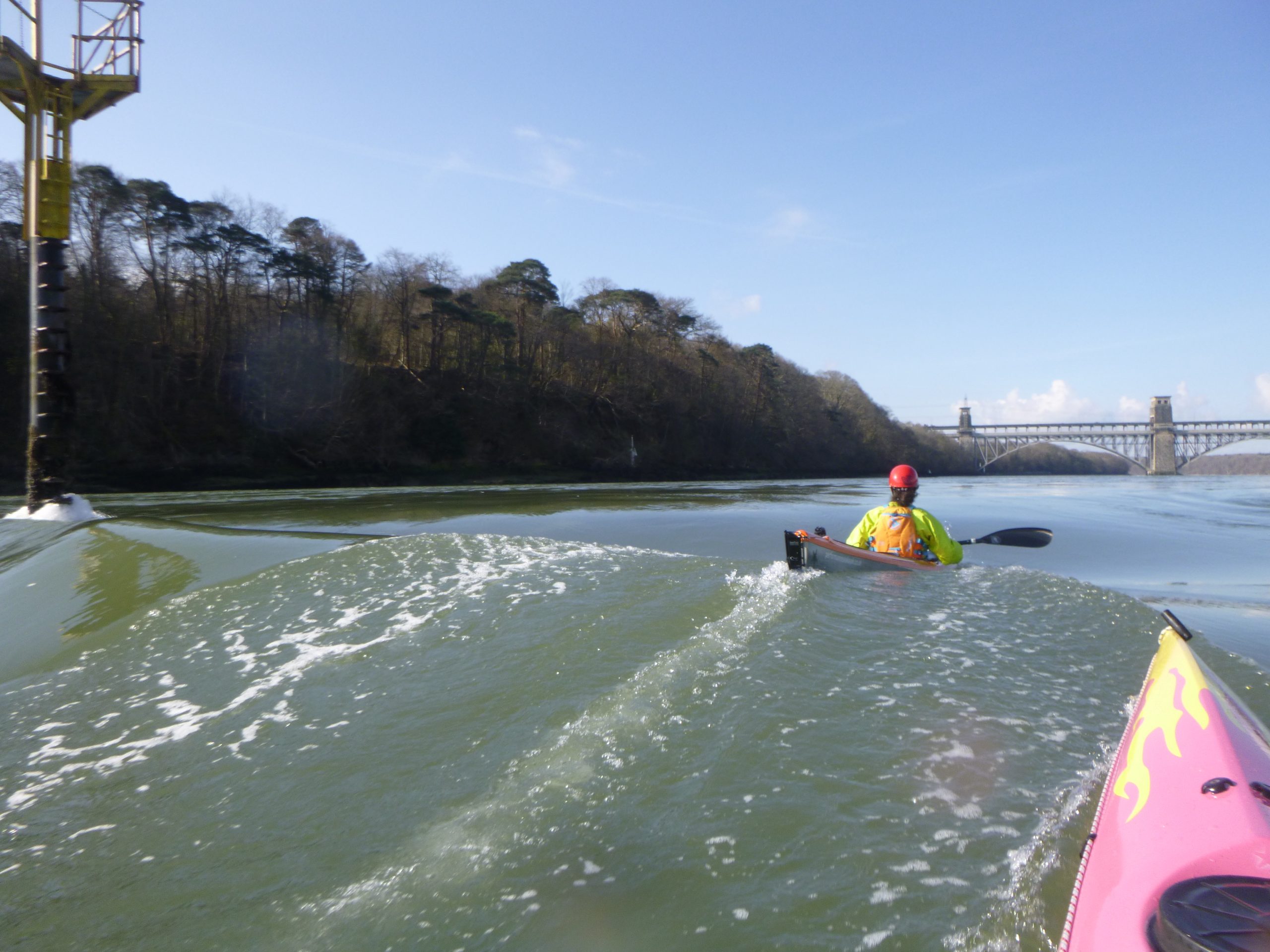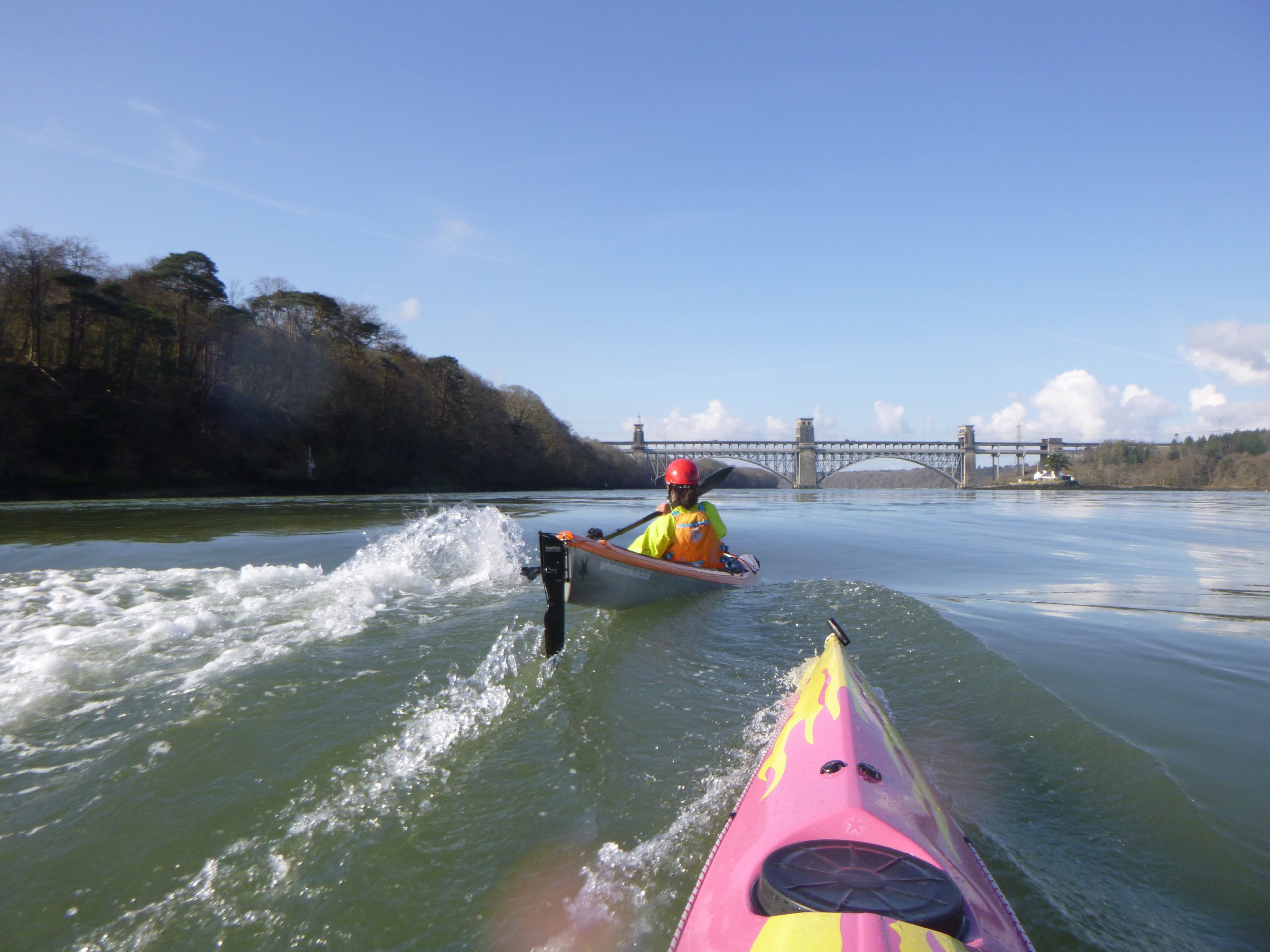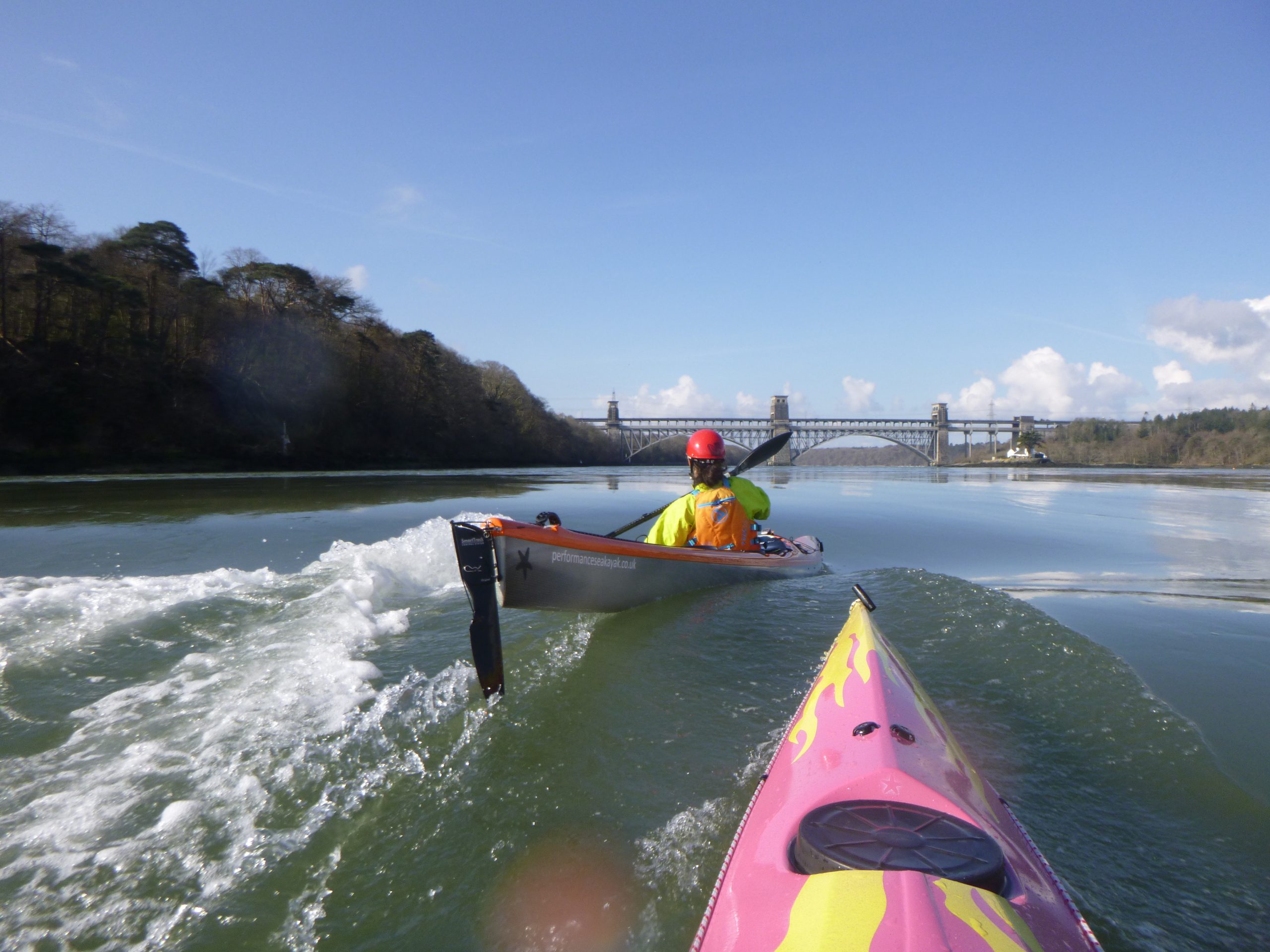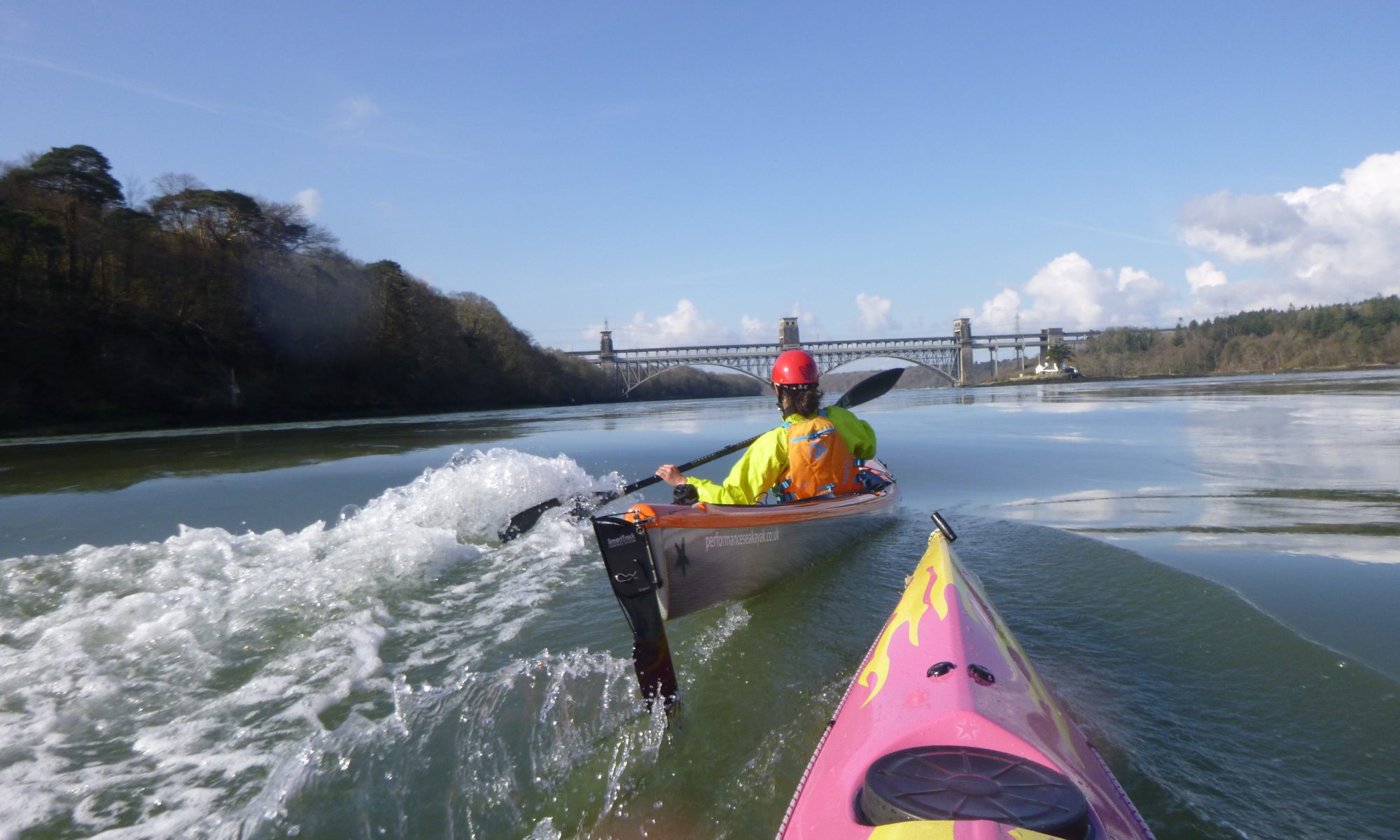Recently I posted a photo on the Strictly Sea Kayaking facebook page and this prompted a question from Steve Macfarlane on the subject of the rudder. I thought the reply may interest those rudder-equipped paddlers out there.
Rudder Release.
If you compare the photos we can see that the paddler has moved the boat rearward, and up the face of the wave. This is to ‘release’ the stern and in turn increase the manoeuvrability of the boat, by decreasing the effective waterline length. Once she has completed her manoeuvre she moves the boat back down the wave, increasing the waterline length and in turn regaining longitudinal stability for a smooth surf.
(Notice the difference in strokes in play with the stern released and when the boat is ‘down the wave’.)

To look in more detail:
The Taran is a relatively long waterline boat for paddling on moving water, on the wave here it has a waterline of close to 5.5m. Bring the rudder into the equation too and you have a boat that will sit nicely on the green wave with only minor inputs from the rudder required. Combine a smooth wave with a little skill and there should be minimal need for negative strokes or significant edging for a smooth surf on the wave. Just keep the bow angle under control and all will be smiley for as long as you want.

However when we want (or need) to make a larger movement/position change then we need to overcome this longitudinal stability. So we ‘release’ the hull, to give us increased manoeuvrability.
To do this we slide the boat back up the wave face towards the crest. High enough up and the stern releases from the wave (basically the back of the boat hangs over the crest). This in turn shortens the effective waterline of the hull, which reduces the inherent longitudinal stability and so gives us an increase in manoeuvrability. The bigger the ‘release’ the bigger the manoeuvrability gain.

And as you release the stern, of course you also release the rudder (no need to lift it) so it’s a double win on the handling stakes. Throw in an edge now, or a larger stroke correction and you can easily make large movement changes with the boat.
If you ride high enough up the wave you can also release the bow for an even greater manoeuvrability gain. However, whereas releasing the stern alone gives a relatively gradual and predictable change, releasing the bow too can give a sudden large change in manoeuvrability (which can also be seen as a sudden decrease in directional stability). You have to be ready for this or you are probably heading for a rather quick onset and ever increasing broach/tankslapper.
And of course you only have to move slightly too high up the wave to see-saw on the peak before dropping off the back of the wave, and into a world of eternal shame!
Basically lean forward to ‘lock in’ – lean back to ‘wander around’.
by John Willacy
